Advantages of open-ended survey questions
- Provide context-rich information for respondents
- Qualitative data offers valuable marketing insights
- Reveal customer insights for product improvement
- Uncover new information
- Enhance the feeling that customer opinions matter
- Boost customer satisfaction
- Encourage creative, spontaneous responses
- Identify trends and patterns in customer sentiment
- Support deeper segmentation and personalization
- Capture authentic customer testimonials
- Strengthen relationships with customers
- Add context to quantitative findings
When it’s time to survey your audience, whether it’s to collect employee feedback, gather data to optimize retail operations, seek input to improve your marketing or customer relations, or just about anything else, you first have to decide on the type of questions to use.
While close-ended questions will elicit quantifiable data, if you’re looking for in-depth insights full of context and rich detail, you’ll want to ask open-ended questions.
In this post, we’ll define what an open-ended question is, discuss the advantages of open-ended survey questions, share examples of open-ended questions from different fields, and explain how Jotform can help you easily create open-ended question surveys.
A brief explanation of open-ended questions
Open-ended questions allow respondents to answer in detail in their own words and provide as much context as they wish, rather than selecting from a predefined set of responses, as with closed-ended format questions.
For example, a closed-ended customer service question might ask, “On a scale of 1–10, how would you rate your last customer service interaction with us?” In contrast, an open-ended customer service question could ask, “How would you describe our customer service?”
Situations that are perfect for open-ended questions
Open-ended questions are ideal for when you want to collect in-depth feedback to gain a holistic understanding of the needs and preferences of your audience. One of the advantages of open-ended questions is the ability to dig deep into what your audience values and gather insights that will allow you to make key improvements to your business, brand, or organization.
12 advantages of open-ended survey questions
Open-ended survey questions offer several distinct advantages:
1. They allow respondents to provide detailed, context-rich information that researchers can’t obtain by asking closed-ended questions. Understanding why respondents feel the way they do can inform business decisions in a way that numbers, ratings, yes/no responses, and other quantitative data can’t.
2. The qualitative data they generate can be a good source of marketing copy that directly addresses the desires and pain points of your audience. (This is known as voice of customer, or VoC, data).
3. Detailed customer insights can help you improve your products and services. You’ll know exactly what customers think about your brand, business, or organization and its product offerings so you can refine them to meet customer needs and expectations.
4. They can uncover all-new information that wouldn’t otherwise be revealed. Because customer responses aren’t limited to pre-selected answer options, you may discover complex issues you never knew existed or surprising problems that you need to solve. Addressing these challenges can bring benefits like increased sales. For example, customers may share product features they’d like to see implemented that you hadn’t previously considered.
5. Open-ended questions increase a customer’s sense that their opinions really matter. Unlike closed-ended questions, where everyone has the same answer choices, open-ended questions encourage respondents to share thoughtful, nuanced responses that indicate their true perceptions, thoughts, and opinions.
6. They can increase customer satisfaction, particularly if you make improvements that align with the preferences customers have expressed through qualitative open-ended questions.
7. They encourage creative and spontaneous responses. Because there are no predetermined answers, respondents have the freedom to express unique, original ideas or perspectives that can spark innovation or lead to novel insights about your customers.
8. Open-ended questions help identify trends and patterns in customer sentiment over time. By analyzing the rich, narrative responses you receive, you can pinpoint emerging trends, customer expectations shifts, or market conditions changes more accurately than with rigid numerical data alone.
9. They enable deeper customer segmentation and personalization strategies. Qualitative insights help you understand customer motivations and needs at a granular level, empowering your business to deliver more targeted, personalized marketing campaigns and communications.
10. These questions are particularly valuable for capturing authentic customer testimonials and stories. Rich, narrative responses can serve as powerful social proof, increasing trust and credibility when featured in marketing materials, websites, or advertisements.
11. Open-ended questions foster stronger relationships with customers. Inviting customers to express their views openly demonstrates genuine interest and builds emotional connections, promoting brand loyalty and long-term engagement.
12. They provide context and clarification to quantitative findings. When paired with numerical data, qualitative responses help explain the underlying reasons behind customer behaviors, preferences, or dissatisfaction, leading to more informed, strategic decisions.
Open-ended question examples
Let’s take a look at a few examples of open-ended questions across different fields.
Open-ended employee feedback questions
- How can we improve the workplace to make it better for employees?
- If you were the CEO, what things would you change about the company, and why?
- What is the most positive/least positive thing you have experienced working here?
- What is the greatest challenge you have faced working for this company?
- What do you enjoy most/least about working here?
Open-ended questions for the retail sector
- What factors led you to visit our store?
- Describe your most recent shopping experience with us.
- What improvements could we make to improve your overall shopping experience with us?
- Why did you choose to shop with us today rather than [competitor]?
- In what ways can we improve our product selection?
Open-ended questions for e-commerce surveys
- Describe the main factors that influenced your decision to purchase from our online store.
- How can we improve the user experience of our website?
- Tell us how we can improve the product selection of our online store.
- What other brands did you consider purchasing this product from?
- Why did you choose our brand over [competitor]?
- What problem were you seeking to solve with our product?
Open-ended questions for marketing
- How did you discover our products/services?
- How much influence did our last marketing/advertising campaign have on your recent purchase?
- How would you explain our products to a friend or family member?
- What companies or brands do you perceive as our competitors?
- What would you change about our product/service to make it ideally suited to you?
Open-ended questions in the education sector (to ask students)
- What are the greatest challenges you face in achieving academic excellence?
- What changes would you make to improve the day-to-day learning experience in the classroom?
- Describe how the curriculum is helping you achieve success.
- What can educators and administrators do to make learning more effective?
- How do you feel about the leadership at this institution?
Open-ended questions for hospitality
- What factors influenced your decision to stay at our hotel?
- Describe what you enjoyed most about your stay.
- Please share ways you think we can improve your experience while staying with us.
Open-ended questions for patient feedback
- How would you describe your last visit to our healthcare facility?
- What brought you to our healthcare facility today?
- Please share ways we can improve the patient care experience.
Surveys made easy with Jotform
It’s easy to create a variety of survey types with Jotform’s free online survey maker. The drag-and-drop functionality allows you to create beautiful surveys with no coding required. You can add your own questions, set up conditional logic, and share your custom survey online to start collecting responses instantly.
If you don’t want to build your survey from scratch, simply choose one of over 1,000 free survey templates and customize it using our form builder. Simply add your own questions and change the fonts and colors to match your organization’s branding.
To add open-ended questions to your survey, add the “Long Text” element to your form by dragging and dropping or simply clicking on it. You can also set up an entry limit for the field in the form builder by following these simple instructions.
Your survey responses will automatically be stored in Jotform Tables, so you can easily track and manage them in one place.
The kind of questions you ask will depend on the kind of data you’re seeking. An effective survey will include both closed-ended and open-ended questions. Closed-ended questions will net quantitative data, such as facts, figures, and percentages, while open-ended questions will elicit detailed, context-rich, qualitative data.
Photo by Gustavo Fring



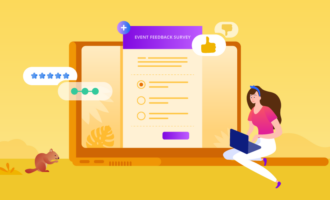
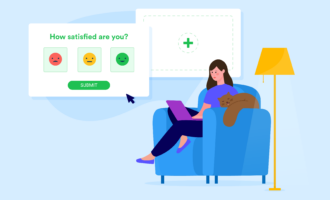
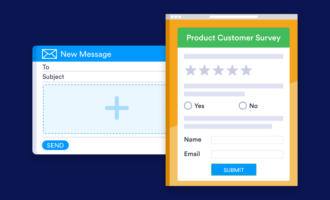

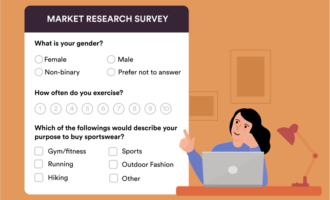


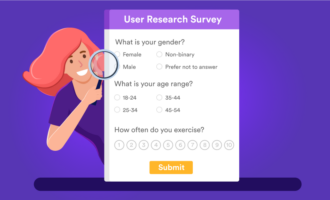




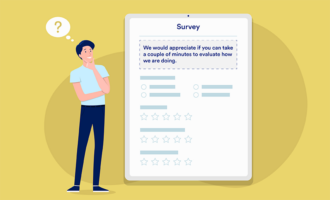










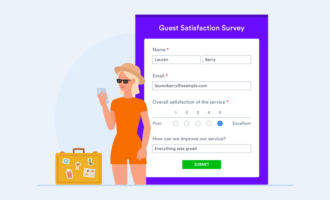








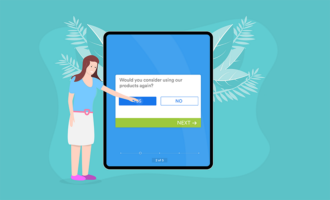
































































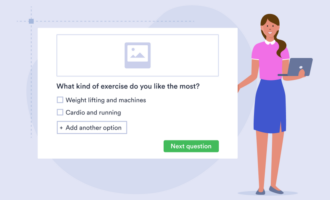


Send Comment: